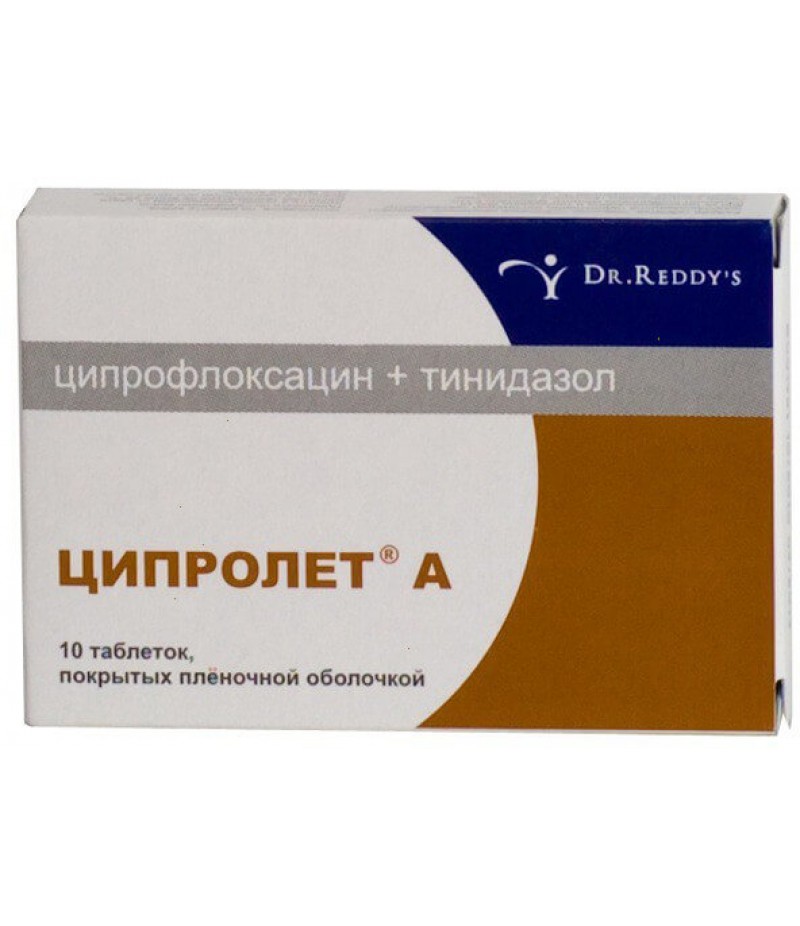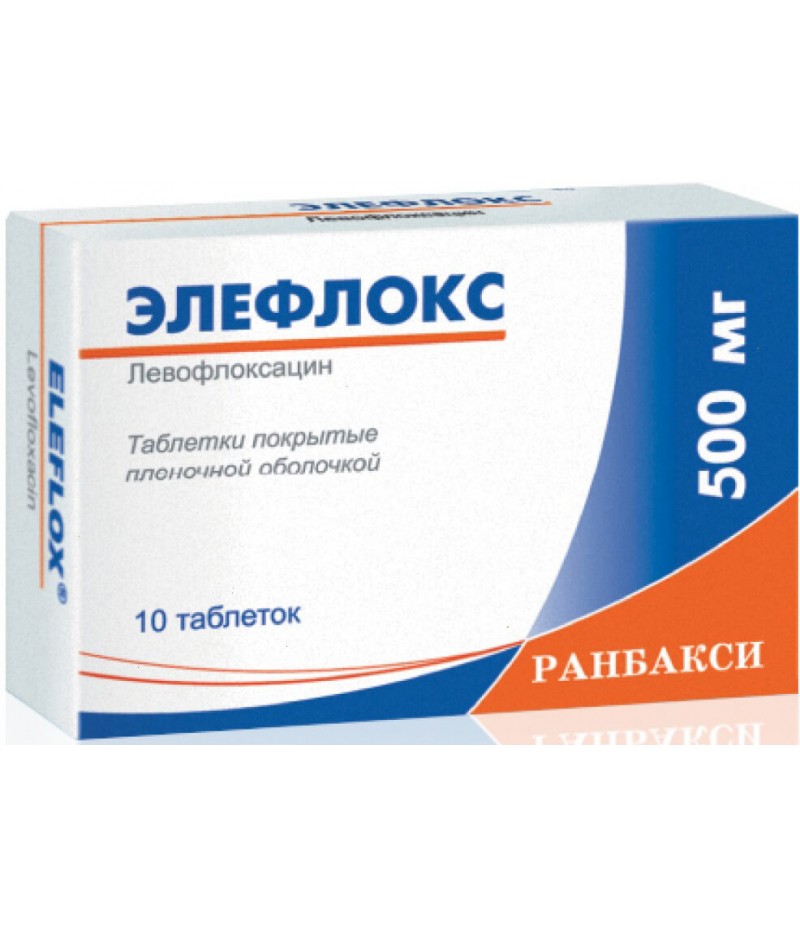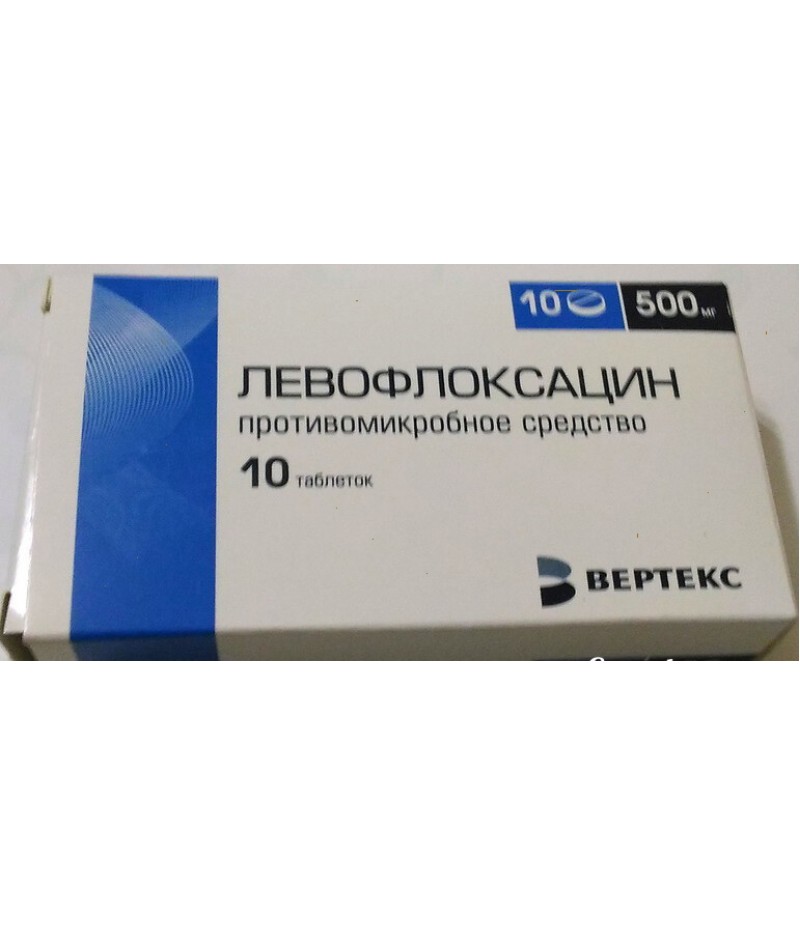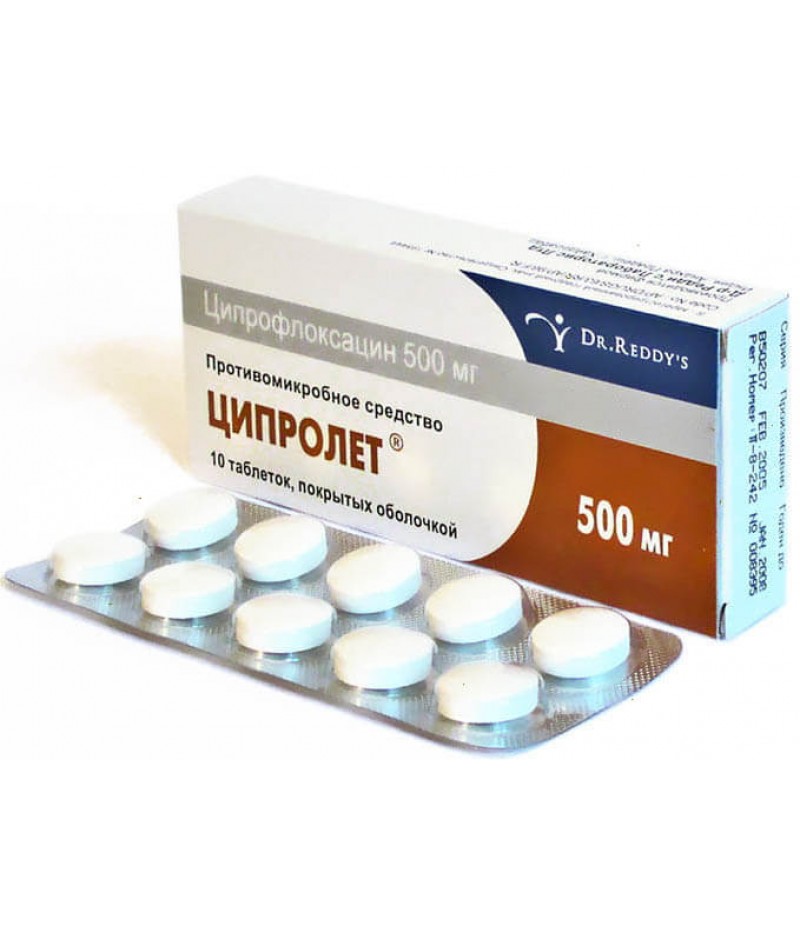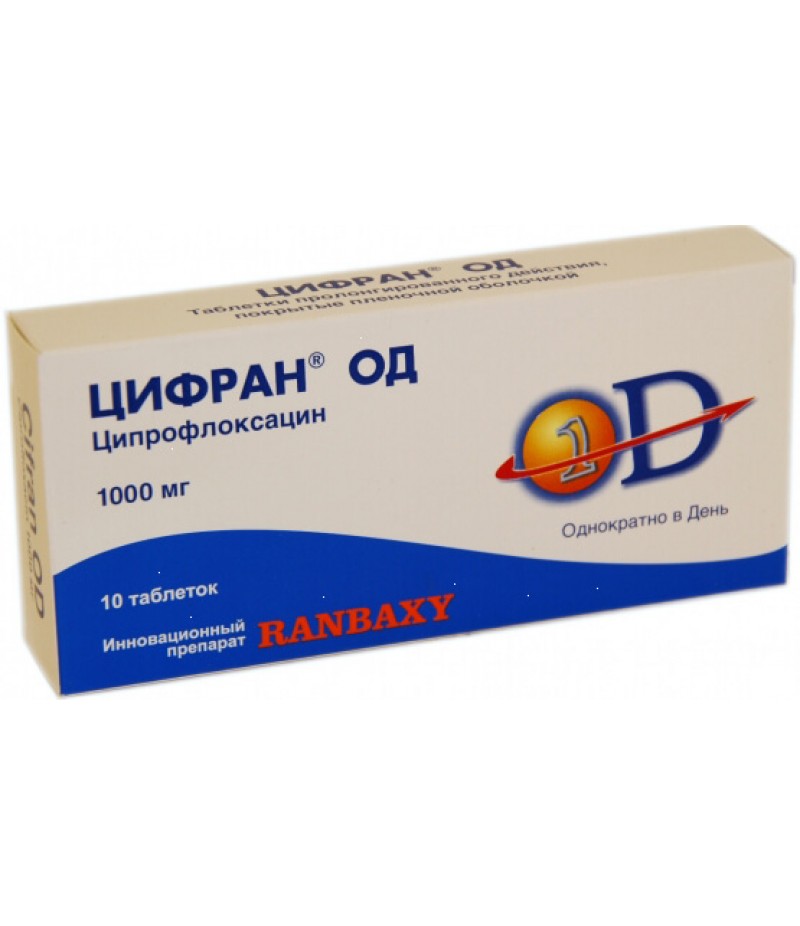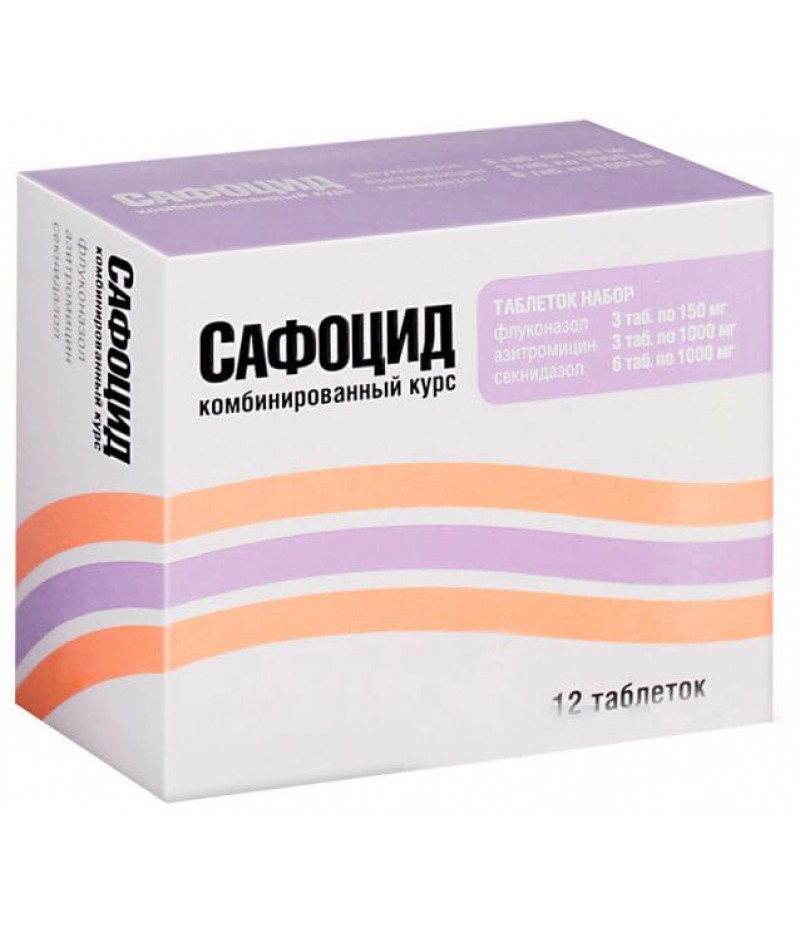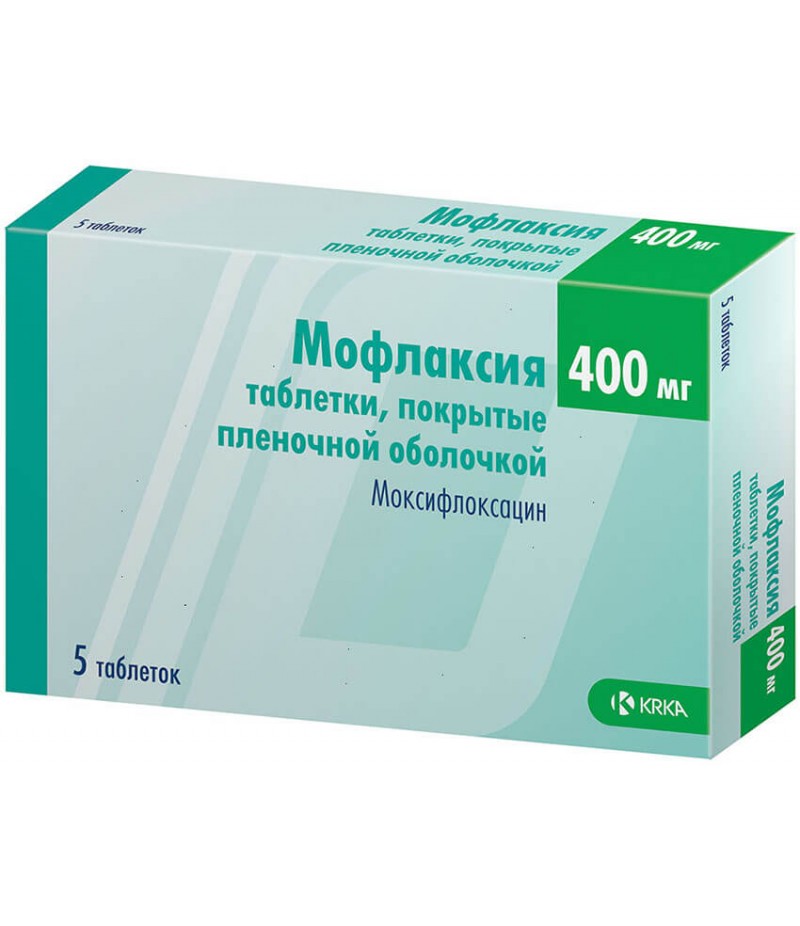Ciprolet А tabs 600mg + 500mg #10
- $12.37
- 3 or more $11.90
- Availability:In Stock
Ciprolet А buy onlineCiprolet А instruction for useComposition1 tablet contains 600 mg of tinidazole and 500 mg of ciprofloxacin are the active ingredients.Additional ingredients: croscarmellose sodiu
Tags: tabs
Ciprolet А buy online
Ciprolet А instruction for use
Composition
1 tablet contains 600 mg of tinidazole and 500 mg of ciprofloxacin are the active ingredients.
Additional ingredients: croscarmellose sodium, corn starch, sodium carboxymethyl starch (type A), microcrystalline cellulose, colloidal silicon dioxide, talc, magnesium stearate, hypromellose, titanium dioxide, macrogol 6000, dimethicone, polysorbate 80, yellow dye sunset (E110).
Form of issue
Ciprolet A is available in the form of tablets in a shell, 10 pieces per pack.
pharmachologic effect
Antiprotozoal, antimicrobial.
Pharmacodynamics and pharmacokinetics
Antiprotozoal and antimicrobial effects of the combined drug Ciprolet A is manifested due to the effects of its two active ingredients.
The imidazole derivative, tinidazole, is an antiprotozoal and antimicrobial drug with high lipophilicity, which easily penetrates into the simplest organisms and anaerobic bacteria, where the intracellular synthesis is inhibited and the structure of their DNA is damaged. Tinidazole is disastrous for the causative agents of trichomoniasis, giardiasis, amoebiasis and microorganisms causing anaerobic infections: Clostridia, Bakteroid, Eubacteria, Fusobacteria, Peptococci, Peptostreptococcus.
The derivative of fluoroquinolone - ciprofloxacin - is characterized by broad antimicrobial efficacy. Suppresses the II and IV topoisomerases of DNA-gyrase of microorganisms, which are responsible for supercoiling the DNA of chromosomes around the RNA of the nucleus, which is obligatory for the decoding of genetic information. Prevents the division and growth of bacteria, the synthesis of DNA, leads to pronounced changes in intracellular morphology (including its membranes and walls), which together is the cause of their death.
Bactericidal efficacy is directed to gram-negative microorganisms at the stage of their division and rest (due to lysis of the cell walls), and on gram-positive bacteria only at the stage of their division. Ciprofloxacin has a low toxicity to the cells of the macroorganism due to the absence of DNA gyrase in them. When applied, there is no parallel development of resistance to other antibacterial agents that are not inhibitors of gyrase, which is expressed in the high effectiveness of the drug against bacteria that resist the action of aminoglycosides, cephalosporins, penicillins, tetracyclines and many other groups of antibiotics.
The use of ciprofloxacin is disastrous for aerobic gram-negative microorganisms - enterobacteria (Salmonella, E. coli, Shigell, Klebsiell, Proteus, Enterebakera, Serratsy, Edwardsciell, Hafnius, Morganell, Yersinius, Vibrio). Other Gram-negative bacteria (Pseudomonad, Hemophilus, Moraxell, Pasteurell, Aeromonad, Campylobacter, Neisseria). Some intracellular pathogens (Legionella, Listeria, Brucella, Mkobaktery) and representatives of aerobic Gram-positive bacteria (Streptococcus and Staphylococcus).
In the case when resistance of staphylococci to methicillin is observed, they are most often resistant to ciprofloxacin, but this resistance is formed extremely slowly in view of the fact that microorganisms do not produce enzymes that inactivate the drug and in connection with their extremely small amount left after its effect.
When administered orally, the two active ingredients are well absorbed into the digestive tract, while their intake during eating, although somewhat slows the absorption process, but does not affect the bioavailability and Cmax.
Bioavailability of tinidazole is at the level of 100%. Connection with plasma proteins - 12%. Cmax after internal administration of 500 mg is observed after 120 minutes and equals - 47.7 μg / ml.
In the cerebrospinal fluid is at the same concentrations as in the blood plasma. In the renal tubules, the process of reverse suction passes. T1 / 2 varies at a level of 12-14 hours. Metabolic transformations are carried out with the help of cytochrome P450 in the liver. With urine, excreted by 25%, with bile by 50%, while 12% in the form of metabolites.
Kidney pathology with QC greater than 22 ml / min does not affect the pharmacokinetic parameters of tinidazole.
The bioavailability of ciprofloxacin varies between 50-85%, and the relationship with plasma proteins is within the range of 20-40%. Vd is 2-3.5 l / kg, Cmax after internal administration of 500 mg is observed after 60-90 minutes and is equal to - 0.2 μg / ml.
Ciprofloxacin is characterized by a good penetration into tissues and fluid media of the human body (except tissues rich in fats, including nerve tissue). Tissue cumulation of the drug may exceed its plasma content by 2-12 times. Values of ciprofloxacin concentrations reach therapeutic levels in saliva, liver, tonsils, gall bladder, intestines, bile, skin, pelvic organs and abdominal cavity, peritoneal fluid, uterus, prostate tissue, semen, endometrium, ovaries and fallopian tubes, urinary system and kidneys , pulmonary tissues, skeleton, bronchial secretion, muscles, articular cartilage and synovial fluid. In cerebrospinal fluid is in small concentrations equal to 6-10% in the absence of inflammatory process and 14-37% when it is formed. Ciprofloxacin also has a good penetrating power in relation to the eye fluid, bronchial secretion, peritoneum, pleura, lymph and placenta. The content of the drug in neutrophils, in comparison with plasma concentration, is 2-7 times higher. At a pH of less than 6.0, ciprofloxacin activity is somewhat reduced. Metabolism of 15-30% occurs in the liver with the release of low-activity metabolites (formylciprofloxacin, sulphociprofloxacin, diethylciprofloxacin, oxocycrofloxacin). T1 / 2 takes approximately 240 minutes. The main excretion is carried out by tubular filtration / secretion by the kidneys, in a ratio of 40-50% unchanged and 15% in the form of metabolites, and also to some extent by the intestine. A small amount of the drug can be excreted with the milk of a nursing mother. Kidney clearance - 3-5 ml / min / kg, total clearance - 8-10 ml / min / kg.
Kidney pathologies increase T1 / 2 ciprofloxacin up to 12 hours. At CC values greater than 20 ml / min, the amount of drug removed by the kidneys decreases, but without cumulation in the body, due to compensatory enhancement of its metabolism and excretion by the intestine.
Indications for use Ciprolet A
Indications for the use of Ciprolet A are infections of mixed bacterial aetiology, which were caused by protozoa and / or microorganisms sensitive to the effects of its active ingredients.
Respiratory system:
bronchiectatic disease;
bronchitis in acute form (acute / chronic);
pneumonia.
Lop-organs:
tonsillitis;
otitis media;
sinusitis;
pharyngitis;
sinusitis;
mastoiditis;
fronts.
Oral cavity:
periodontitis;
ulcerative gingivitis (acute nature);
periostitis.
Skeletal system:
septic arthritis;
osteomyelitis.
Genitourinary system:
endometritis;
pyelonephritis;
pelvioperitonitis;
cystitis;
prostatitis;
salpingitis;
adnexitis;
oophoritis;
tubular abscess.
Skin:
phlegmon;
pressure sores;
abscesses;
infected ulcers / wounds / burns;
skin ulcers arising from the syndrome of the diabetic foot.
Intra-abdominal infections:
intraperitoneal abscesses;
infection of the biliary tract and intestinal tract.
Others:
postoperative / post-traumatic infections.
Contraindications
The appointment of Ciprolet A is prohibited when:
diseases of the blood (including references to those in the anamnesis);
personal hypersensitivity (including previously observed reactions with respect to derivatives of imidazole and / or fluoroquinolone);
pregnancy;
suppressed bone marrow hematopoiesis;
thoracic feeding;
organic diseases of the central nervous system;
acute porphyria;
parallel with admission with tizanidine (due to the risk of severe drowsiness or lowering blood pressure);
under the age of 18 years.
With special caution appoint Ciprolet A at:
convulsions in the anamnesis;
atherosclerosis of cerebral vessels;
mental illness;
disorders of the blood circulation of the brain;
epilepsy;
severe kidney / liver pathologies;
in old age.
Side effects
Sense organs:
impaired sense of smell / taste;
noise in ears;
visual disturbances (change of color perception, diplopia);
hearing loss.
The digestive system:
appetite disorders;
nausea;
metallic taste;
dryness in the oral cavity;
vomiting;
stomach ache;
diarrhea / flatulence;
hepatitis;
Cholestatic jaundice (most often in patients with a history of liver abnormalities);
hepatonecrosis.
Hematopoiesis:
leukocytosis;
leukopenia;
thrombocytosis;
granulocytopenia;
thrombocytopenia;
anemia (including hemolytic).
Nervous system:
hyperhidrosis;
headache;
depression;
dizziness;
dysarthria;
fast fatiguability;
tremor;
coordination disorders (including locomotor ataxia);
anxiety;
peripheral neuropathy;
confusion of consciousness;
convulsions;
fainting;
weakness;
migraine;
insomnia;
peripheral paralysis;
thrombosis of the cerebral arteries;
nightmarish dreams;
intracranial hypertension;
hallucinations;
other psychotic manifestations.
The cardiovascular system:
changes in blood pressure (most often in the direction of its decrease);
arrhythmia;
tachycardia.
Urinary system:
dysuria;
interstitial nephritis;
hematuria;
retention of urine;
crystalluria (with a decrease in diuresis and alkaline pH of urine);
albuminuria;
glomerulonephritis;
polyuria;
decrease in renal excretory function.
Allergic manifestations:
dyspnea;
skin itching / rash;
vasculitis;
Stevens-Johnson syndrome;
hives;
photosensitization;
Lyell's syndrome;
drug fever;
eosinophilia;
petechiae;
erythema nodosum;
angioedema.
Laboratory indicators:
hyperbilirubinemia;
hypoprothrombinemia;
hyperglycemia;
increased level of alkaline phosphatase and liver enzymes;
hypercreatininaemia.
Other:
ruptures of tendons;
arthralgia;
superinfection (pseudomembranous colitis, candidiasis);
myalgia;
arthritis;
asthenia;
tenosynovitis;
tides (usually to the skin of the face).
Instructions for use Ciprolet A
Instructions for Ciprolet A suggests its oral (internal) reception. Tablets must be swallowed whole (do not chew / break), while washing them with 100-200 ml of water.
As a rule, 1 tablet is prescribed every 12 hours for 5-10 days. Tablets are taken 60 minutes before meals or 120 minutes after taking it.
Overdose
In case of an overdose of an acute nature, the dominant symptoms are reversible lesions of the urinary system and possibly seizures.
Therapy of such conditions is to induce vomiting followed by gastric lavage and further maintenance and symptomatic treatment. The efficacy of dialysis relative to tinidazole is 100%, relative to ciprofloxacin - up to 10%.
Interaction
Parallel use with indirect anticoagulants increases their effects, thereby increasing the risk of bleeding, which requires a review of the dose of Ciprolet A in the direction of reducing them by half.
Tinidazole enhances the effect of ethanol-containing agents, which leads to the development of disulfiram-like reactions.
Avoid joint use with Ethionamide.
A combination with Phenobarbital accelerates metabolic transformations of tinidazole.
Ciprofloxacin, due to its effect on the activity of microsomal oxidation in hepatocytes, increases the content of both T1 / 2 indirect anticoagulants, Caffeine, Theophylline and other xanthines, hypoglycemic drugs, and also helps to reduce their prothrombin index.
Joint treatment with Cyclosporin increases its nephrotoxic effects and increases the level of serum creatinine. If necessary, this combination of drugs should monitor this indicator twice a week.
Parallel reception of Ciprolet A with antacids (including aluminum, magnesium, calcium), iron-containing drugs and Didanosine, is the reason for the decrease in absorption of ciprofloxacin, and therefore, Ciprolet A is best taken 120 minutes before or 240 minutes after using the above drugs.
The combined use of NSAIDs (except acetylsalicylic acid) increases the possibility of seizures.
The combined administration with metoclopramide boosts the absorption of ciprofloxacin, which is reflected in a decrease in its Tmax.
Parallel use of uricosuric drugs leads to inhibition of elimination (almost doubling) of ciprofloxacin and an increase in its plasma content.
Ciprofloxacin can increase Cmax of Tizanidine from 4 to 21 times, as well as increase its AUC, which causes drowsiness and a sharp drop in blood pressure.
Ciprolet A is characterized by synergism with sulfanilamide drugs and antibiotics (aminoglycosides, β-lactam antibiotics, Erythromycin, cephalosporins, Rifampicin).
Storage conditions
The maximum permissible temperature of storage of tablets (in the original package) is -25 ° C.
Shelf life - 3 years.
special instructions
During therapy, one should take into account the possibility of forming allergic reactions of a cross type that may occur with the patient's previously observed sensitivity to imidazole and / or fluoroquinolone derivatives.
At the time of taking Ciprolet A, it is recommended to limit the patient's contact with sun rays or other sources of ultraviolet radiation. If symptoms of photosensitivity are detected, the use of drugs should be stopped immediately.
In order to avoid the occurrence of crystalluria it is forbidden (without the instructions of a doctor) to exceed the daily dosages of Ciprolet A. It is also necessary to provide the patient with sufficient volume of consumed liquid and maintain an acidic pH environment of the urine. The dark color of the excreted urine is caused by the effect of the drug and has no clinical significance.
In the case of prolonged and severe diarrhea, observed during or after Tiprolet A, it is necessary to exclude pseudomembranous colitis from the possible causes of this phenomenon, requiring immediate cessation of treatment and proper therapy.
Patients with organic lesions, epileptic seizures, epilepsy and vascular diseases are allowed to prescribe Ciprolet A exclusively for vital reasons, since therapy with its use can lead to serious complications from the CNS.
If a patient finds pain in the area of tendons or the first symptoms of forming tenosynovitis, therapy is stopped until the true causes of these phenomena are clarified.
When taking Ciprolet A tablets, the condition of peripheral blood should be monitored for more than 6 days.
When performing accurate and / or hazardous work, as with driving, due to possible side effects of the CNS, care should be taken.
Children
Ciprolet A is not intended for treatment of patients under 18 years of age.
With alcohol
Because of the possibility of forming disulfiram-like reactions (effects of tinidazole) during the therapy should refrain from drinking alcoholic beverages.
During pregnancy (and lactation)
Do not use Ciprolet A in pregnancy and lactation.
Reviews about Ciprolet A
In a percentage ratio, reviews of the effectiveness / safety of Tiprolet A are approximately 90/30%, that is, of the ten receiving patients, nine are fully cured of their ailments, and three at the same time felt some side effects, usually of mild or moderate nature . The overall assessment of the drug from doctors and patients is "good", and rather affordable cost, in comparison with many similar drugs, often prevails over a relatively small loss in effectiveness.

